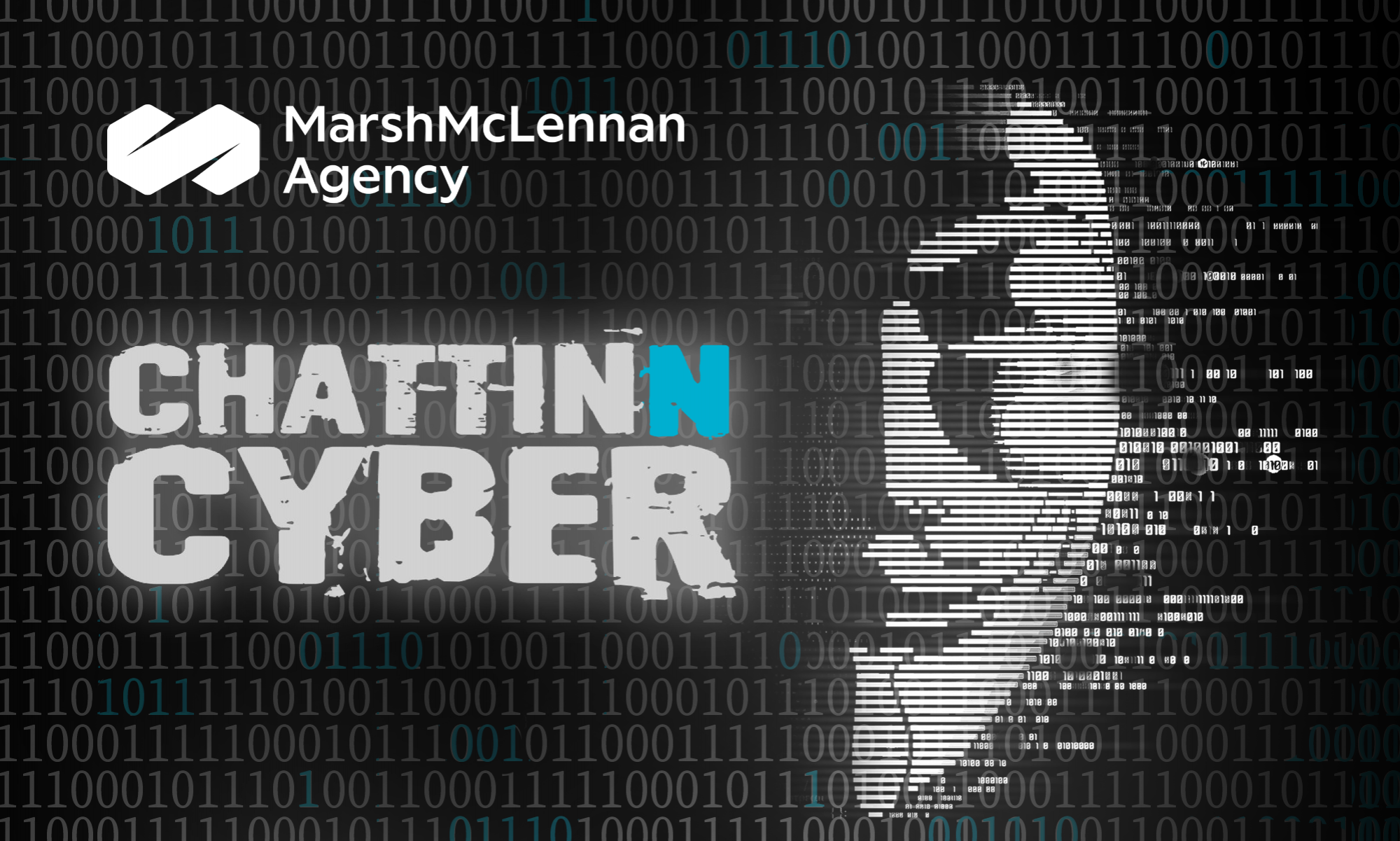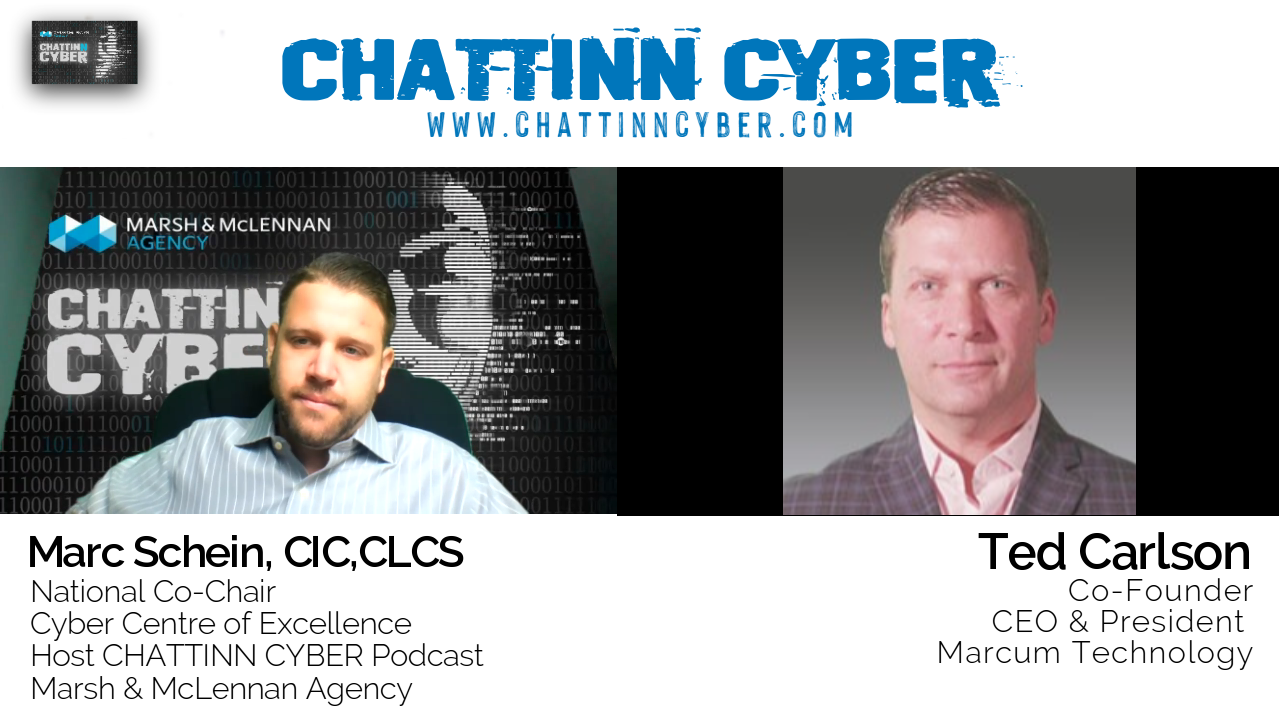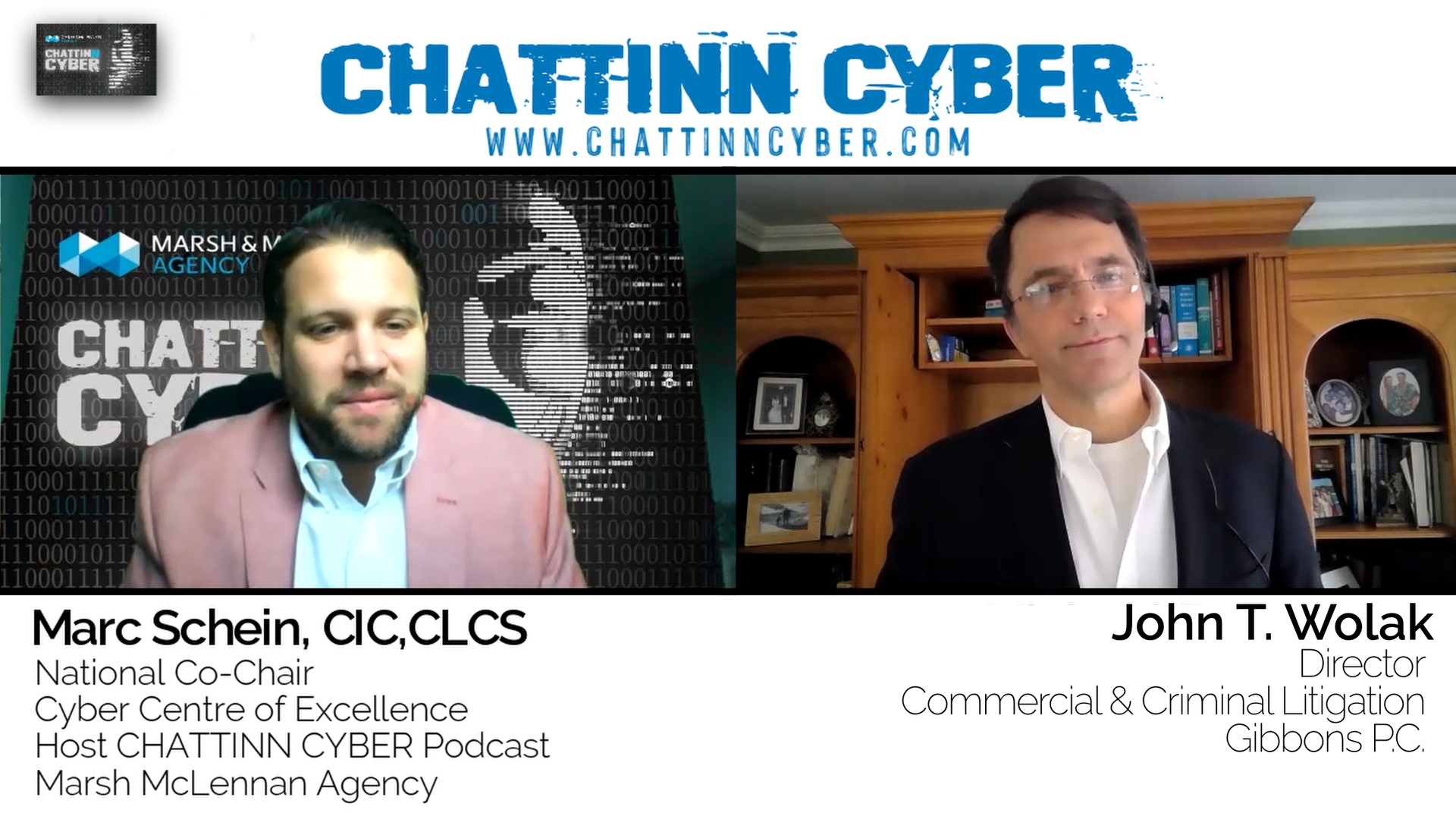Podcast: Play in new window | Download (Duration: 9:26 — 13.0MB)
Subscribe: RSS
In this episode of CHATTINN CYBER, Marc Schein interviews Ted Carlson, Co-Founder and President of Marcum Technology, a renowned Information Technology Consulting Firm in the US. During the conversation, Ted and Marc explore the former’s journey into consulting and technology, Marcum’s service and client diversity, and some thoughts on ransomware attacks.
Marcum Technology is essentially an accounting firm, with technology being its core driver. In addition, the firm offers robotic process automation, business continuity, disaster recovery, and incident response through digital forensics. Ted explains how the company helps organizations prevent ransomware incidents by using parallel networks, adequate backups, and strong infrastructure. He adds that depending on the severity of the attack, the recovery process could vary. Firms should practice testing and rehearsal to ensure business continuity during an attack.
Gathering lessons from his entrepreneurial journey, Ted suggests why you shouldn’t be hesitant to chase your passion. Though taking advice from people could help sometimes, it’s essential to do what you enjoy because that’s what would produce better results sometime down the road. He also states why you might not want to wait for years shifting and switching jobs only to choose another path later – it would be challenging to restart your career 20-30 years after. Don’t let people hold you back from living your dreams.
Tune in to the episode to learn what it takes to build a successful career in the rapidly evolving consulting industry.
Highlights:
“Whenever there’s a merger or acquisition, we’re basically stripping off the technology components of those firms. And we’re kind of blending them into the marking technology division.”
“You can take a certain advice from people, but you really, at the end of the day, have to do what you enjoy, and (do) whatever you feel confident, and that will produce better results down the road.”
“Whatever interests you have, and whatever excites you, I would say, don’t wait, because a lot of people end up waiting and switching during career changes 20-30 years later. And, it’s not that easy to do.”
Time-Stamps:
[00:41] – Ted’s entrepreneurial journey
[01:22] – Advice for college students to chase their passion
[04:18] – More about Marcum
[05:19] – How to prevent ransomware incidents in companies
Connect with Ted:
LinkedIn: https://www.linkedin.com/in/ted-carlson-14977a18/


